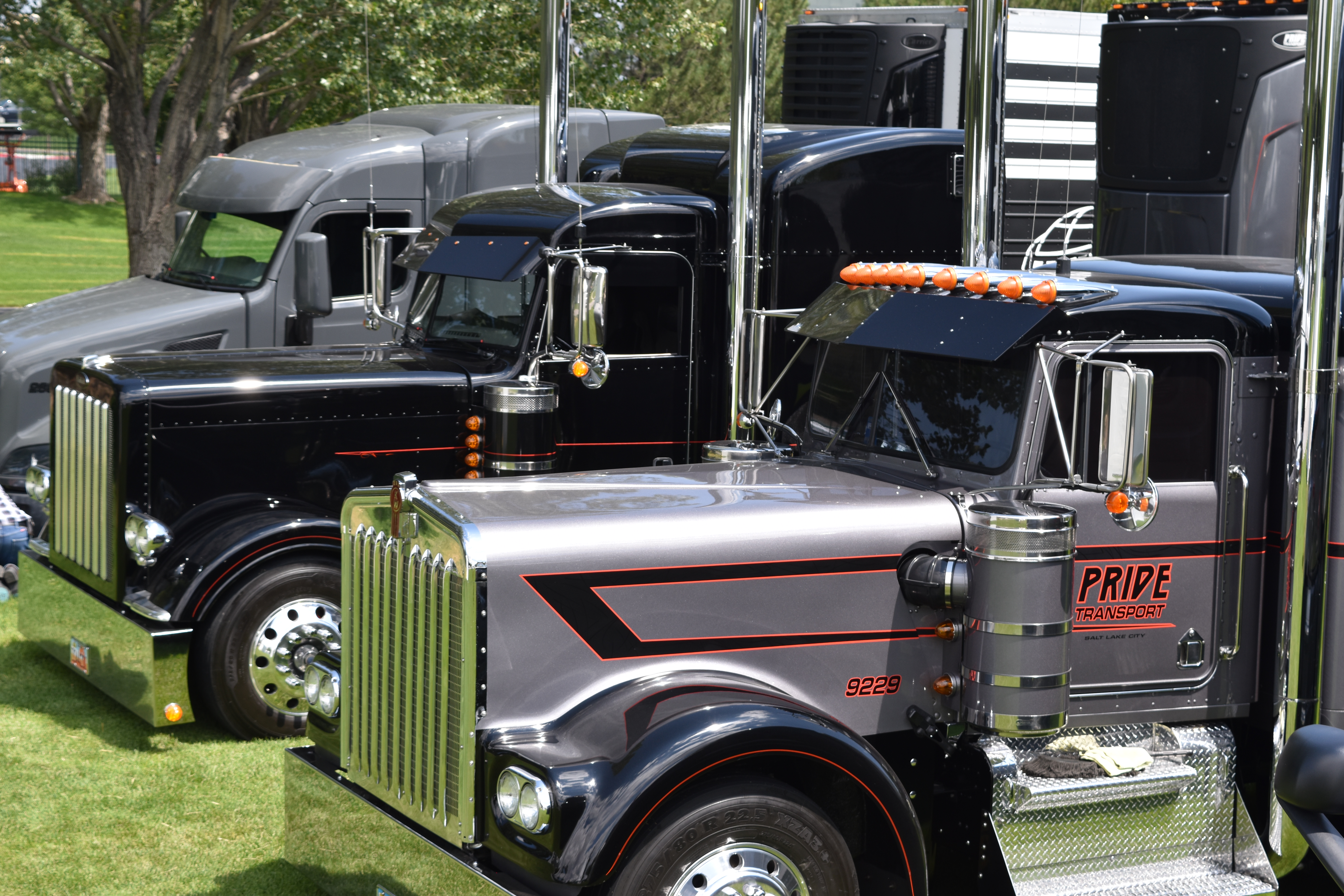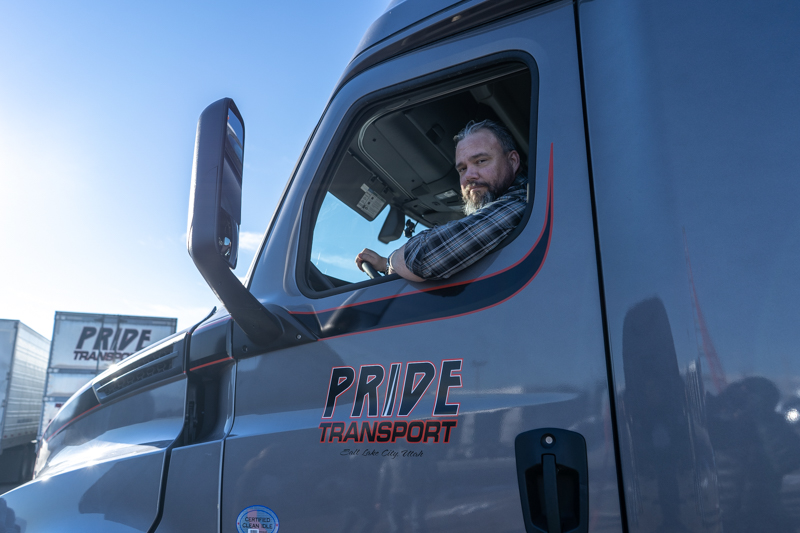by Pride Transport | Sep 25, 2023
Sure, we’ve all seen our fair share of big trucks. Every day we drive past them on the road, park next to them at the grocery store, and ogle them at truck stops. But what makes these trucks special? There are so many fascinating things to learn about big rigs, and here at Pride Transportation, we have plenty of fun facts you can use to impress your friends (or your kids!) the next time you’re up close and personal with a tractor-trailer.
It Takes a Truck The Length of Two Football Fields to Brake
Because trucks carry heavy loads and are weighed down by lots of fuel, they take quite a long time to stop–a distance of about two football fields (200 yards), in fact. Of course, there are many variables that affect how long it takes a truck to come to a complete stop, including road conditions/weather, the weight of its load, whether or not it has a full fuel tank, and driver reaction time.
It can take about 40% longer for a loaded semi to come to a stop than for a passenger car to come to a stop. Sharing the road safely and not crowding trucks in traffic is key to giving drivers plenty of time and space to brake!
What Is The MPG of A Big Rig?
Unsurprisingly, large vehicles like tractor-trailers get worse gas mileage than your average passenger vehicle does. Even though they can hold somewhere between 100 to 400 gallons of fuel, they really only get about five or six miles per gallon. (For context, your car probably gets about 25 miles per gallon.)
Thankfully, a big gas tank means a long range for drivers. Depending on how much drivers are idling and using cruise control, and how carefully they’re regulating their speed and checking their tires, they can stretch their range even longer.
And an extra fun fact? The tankers that deliver fuel to your local gas station are likely carrying around 9,000 gallons of fuel!
Diesel Over Gasoline
Diesel certainly has a stigma: The news commonly talks about harmful greenhouse gas emissions coming from diesel-powered vehicles. And while this is true and something to consider as we begin to rethink the efficiency of the transportation industry, ironically, diesel engines actually make big rigs more efficient.
This is because of torque. Unsure of what that means? Generally speaking, diesel engines produce more low-end torque than gasoline engines, meaning they have more horsepower, working harder and smarter. So at the end of the day, diesel engines produce around 33% fewer emissions than gasoline-powered engines.
Semis Can Weigh Up To 80,000 Pounds
How much did you think a loaded tractor-trailer weighs? It turns out, at their heaviest, heavy rigs of the biggest class can weigh over 26,000 pounds–all the way up to 85,000 pounds!
Is this more or less than you expected? We’re blown away by just how big these big rigs can get!
Trucks are broken into classes depending on their type, and which class they fall under determines how much their maximum weight can be when they head out on the road. There are eight classes:
-
Class 1: This class includes large SUVs, mini vans, and pickup trucks that weigh less than 6,000 pounds
-
Class 2: Class 2 vehicles include cargo vans that weigh between 6,000 and 10,000 pounds
-
Class 3: Vehicles like box trucks can weigh up 10,000-14,000 pounds
-
Class 4: Classes 4, 5, and 6 are medium-sized trucks, starting with walk-in moving trucks that weigh around 14,000 to 16,000 pounds
-
Class 5: Class 5 trucks are a bit bigger, like bucket trucks, and weigh up to 19,500 pounds
-
Class 6: Schoolbuses, which would fall in Class 6 territory, can weigh almost 26,000 pounds!
-
Class 7: The last two classes are your mega monster trucks, like truck tractors (that’s a truck minus its trailer) or city buses. Class 7 vehicles weigh anywhere between 26,000 and 33,000 pounds.
-
Class 8: The biggest class of truck starts around 35,000 pounds and can weigh up to 80,000 pounds at max capacity!
The largest trucks that the United States allows on the road are 80,000 pounds fully loaded. The load is dispersed over 18 wheels, and we have a lot of respect for those severe duty trucks.
Mud Flaps Do More Than Just Protect Your Vehicle
Mud flaps on a truck do exactly what they claim to do: protect it from mud. Rumor has it that during World War II, Oscar March, a truck driver in Oklahoma City’s Tinker Air Force Base, attached large sheets of canvas behind each wheel of his rig to help prevent it from kicking up too much dirt and debris, which might have damaged the load in his open truck bed (and even the vehicles driving behind him).
Fast forward almost one hundred years, and mud flaps now come standard on every truck and can even be used on personal cars. Many truck drivers have really taken advantage of this accessory and used them as a decoration of sorts, giving their rig some personality. We’ve seen some pretty funny mudflaps–everything from giant flip flops to big bumper stickers boasting messages from Yosemite Sam.
Trucks Can Cost Upwards of $100,000
Semi trucks unsurprisingly cost a lot of money. In fact, depending on the make and model of the tractor, a new truck can run between $100,000 all the way up to $200,000. Older, used trucks can cost a lot less, perhaps starting around $30,000, depending on their age and mileage.
This all might change over the next few years, though. The more common electric vehicles become, the more electric trucks we’ll start to see. Allegedly, Tesla has been creating an electric semi priced around $150,000.
Bonus Fun Fact: Drive With Pride To Find Out!
If you’re curious about learning more fun facts, look no further: getting behind the wheel can expose you to so many more details about these special vehicles. At Pride Transportation, our drivers know their trucks inside and out so they can drive them with confidence.
To learn more about our fleet and the perks of working with our team, visit our job openings page.